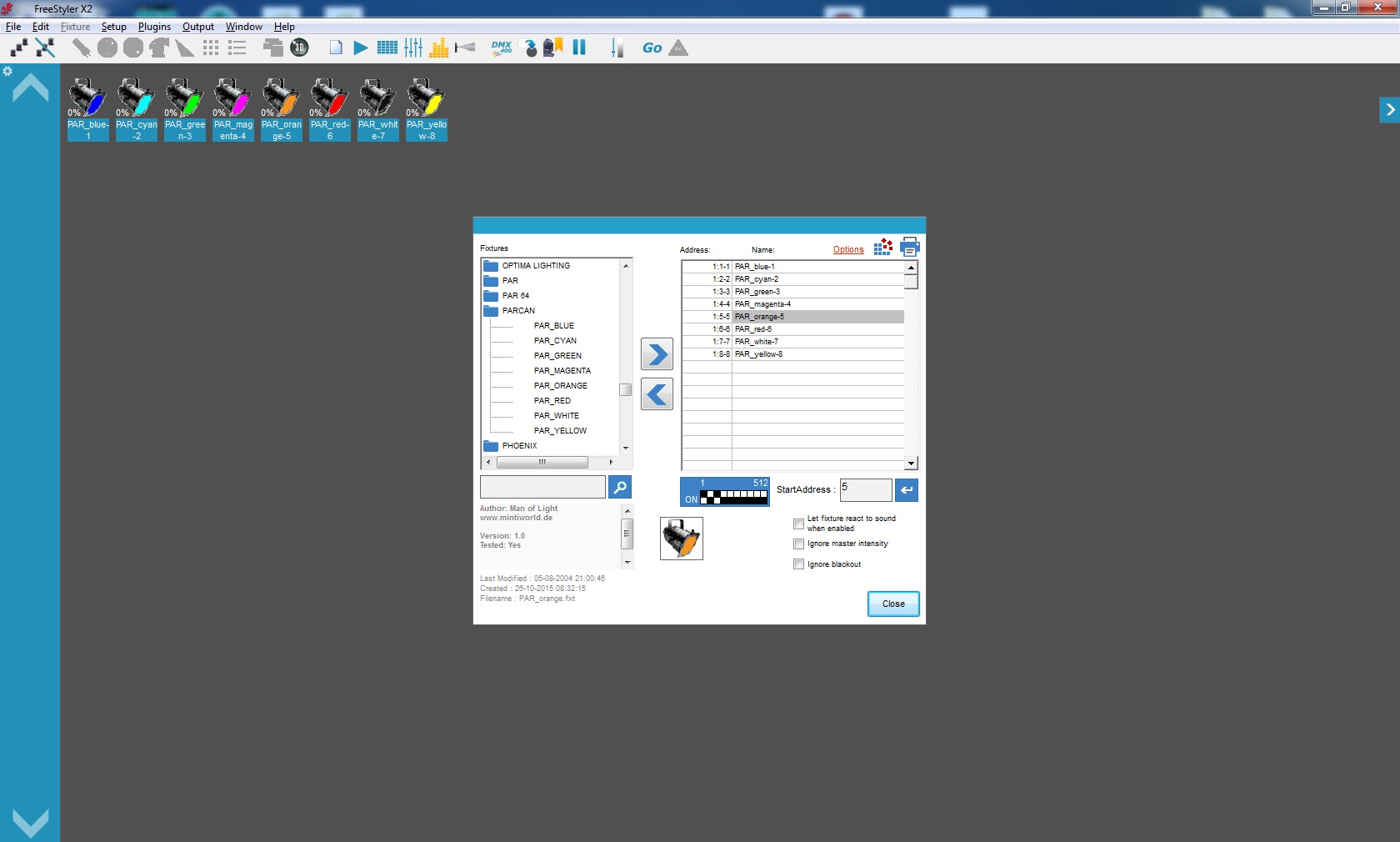Hi, it has been a while since i posted here. Something fully different today.
In last weeks i had the opportunity to play with some minimalistic components to set up a lightshow for family parties. I want to share with you the steps involved. Setting things up requires some hours, but the hours are will spent!
Hardware
First get your hardware at one of the online discounters, amazon, aliexpress, bax, Thomann, For example:
- A USB to DMX interface connects your windows laptop to the lightshow, I tried Lixada and works nicely (see later)
- Some DMX cables (one for each light)
- a DMX terminator should be applied at the final light of your lightshow
- and then some PAR and effect lights. This 10E RGB PAR works quite nicely. Verify the light comes with a DMX interface.
Software
The Lixada DMX to USB comes with a Windows 95 driver on a CD... It doesn't work on modern 64bit systems. Fortunately a german guy crafted a driver available via https://www.illutzmination.de/udmxdriver.html for the uDMX interface which works nicely on my win11 laptop
A next tool needed is a software to setup and play the sequences of the lights. I tried opensource Freestyler, and it works nicely. The website and documentation looks a bit rusty, but it works.
Concepts
A DMX chain connects a chain of lights from the DMX controller to the terminator plug (connect the DMX-out to DMX-in of the next light in the chain).
DMX provides 256 channels, for each channel a level from 0-100 can be send, indicating the brightness of the light. In theory you can control 256 lights with 1 dmx chain. However modern lights require multiple channels per light, 1 channel to control the brightness, others for color, direction, shape, strobe etc. On DMX controlled lights you can typically configure the starting channel for them to listen for. In freestyler you typically indicate for each channel range which light(s) it will control. For example, range 1-8 control light A and channel 9-15 control light B (where lights A and B typically require 8 channels each to be controlled).
A 'fixture' defines what each of the channels of a light manages. Each light requires a specific fixture. For example: Channel 1: Brightness, Channel 2: Red, Channel 3: Green, etc. Freestyler includes many known fixtures for common lights. But you can quite easily create a new fixture for your specific light using freestylers 'fixtureCreator'.
A 'Sequence' plays a set of scenes. Each scene is a single state of all your lights, for example: A and C off, B and D blue, E and F red. Sequences and their scenes are created in the main Freestyler app. During the party, sequences are played using the Sequence player (where you control the speed of playing the sequence and even combine sequences).
Conclusion
With the components above you can set up your lightshow with 8 pars and 4 effects for under 200,- and the show will be quite impressive. Personally I like to use sequences in which I restrict the number of colors in each state to 1 or 2. Combining contradicting colors such as yellow/purple or green/red.
Let me know if aspects are unclear, and i'll have a look where to extend the story. Continue reading at the Freestyler documentation.


